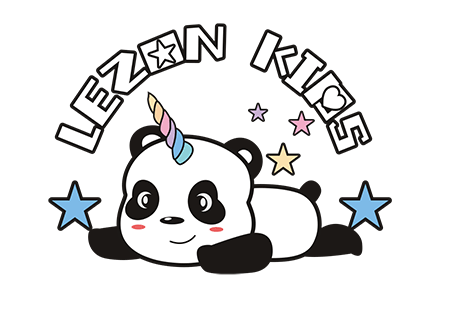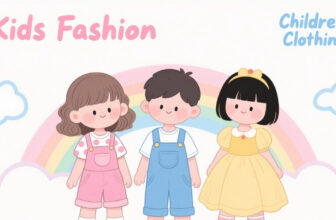The Indian children’s clothing market has shown significant growth in recent years. Its characteristics, the feasibility of Chinese exports to India, customs data, and growth trends can be comprehensively analyzed as follows:
I. Characteristics of the Indian Children’s Clothing Market
- Market Scale and Growth Potential
India is the world’s third-largest children’s clothing market, with a market size of 23 billion USD in 2023, expected to reach 27 billion USD by 2028, with a compound annual growth rate of approximately 4.23%. The growth drivers come from a large young population (about 360 million children aged 0-14), the expansion of the middle class, and consumption upgrading. For example, there are about 120 million children aged 0-4 in India, driving the rapid expansion of the baby clothing market, with sales of this category on some e-commerce platforms growing by over 100% year-on-year. - Consumption Preferences and Channels
- Balancing Cost-Effectiveness and Quality: Consumers value comfort, safety, and design, with a particular preference for cotton products and environmentally friendly materials. For instance, the proportion of organic cotton and sustainable materials is expected to increase from 15% in 2025 to 35% in 2030.
- Rise of Online Channels: Mobile shopping accounts for 60%, and e-commerce platforms such as Hopscotch and FirstCry have become major sales channels. It is expected that by 2027, the proportion of online sales of children’s clothing in India will increase to 24.1%.
- Cultural and Festival Demands: Sales of traditional clothing (such as ethnic costumes) grow significantly during festivals. For example, sales of children’s ethnic clothing on Flipkart increased by 200% during Navratri.
- Competitive Landscape
- Local Brands Dominate the Mid-to-Low-End Market: Brands like Hopscotch attract 700,000 monthly active users through high cost-effectiveness and online marketing, with local brands occupying about 30% of the branded children’s clothing market.
- International Brands Enter the High-End Market: Zara, Gap, etc., enter India through physical stores and e-commerce, targeting high-income families.
- Clear Price Stratification: The popular price range (50-200 RMB) is highly competitive, while demand for high-end children’s clothing above 300 RMB is growing rapidly.
II. Feasibility of Chinese Exports of Children’s Clothing to India
- Policy and Tariff Environment
- Tariff Levels: India imposes basic tariffs (10%-20%), additional taxes (8%-24%), and a 2% education tax on textiles, with a comprehensive tax rate of approximately 15%-25%. For example, the tariff on plain woven fabrics with more than 85% cotton content is 10%, and the tariff on twill fabrics varies between 7%-8.5% depending on weight.
- Non-Tariff Barriers: Products need to pass BIS mandatory certification (such as IS 15767 standards), involving fiber composition labeling, restrictions on prohibited substances (such as formaldehyde, azo dyes), and labeling requirements (Hindi + English bilingual).
- Cost and Supply Chain Advantages
- Price Competitiveness: China has lower production costs for children’s clothing, especially in cotton products. For example, the number of batches of baby clothing exported from China to India reaches 7,600, mainly through HS codes 61112000 (baby knitted clothing) and 62099090 (baby woven clothing).
- Supply Chain Efficiency: China has a complete textile industry chain, which can quickly respond to market demand in India. The logistics time to major cities is about 4-6 days, with sea freight costs of about 150-300 USD/cubic meter and air freight of 3-8 USD/kg.
- Market Opportunities and Challenges
- Opportunities: The Indian middle class has a strong demand for cost-effective products. China can penetrate the market through e-commerce platforms (such as Amazon India) and local partners. For example, cities at and below the second tier in India contribute over 55% of children’s clothing sales, becoming the main growth driver.
- Challenges: Indian local brands occupy the market through low-price strategies, and there is a tendency towards trade protection (such as a 16% countervailing duty on clothing from Bangladesh). In addition, it is necessary to cope with BIS certification costs (about 35,000 USD/year) and cultural adaptation (such as localization of colors and styles).
III. Customs Data and Trade Performance
- Scale of Chinese Exports of Children’s Clothing to India
- In 2024, China’s total exports to India reached 120.481 billion USD, a year-on-year increase of 2.4%, among which exports of baby clothing grew by 7.9%, accounting for a certain proportion of total clothing exports.
- The main export categories are baby knitted clothing (HS 61112000) and baby woven clothing (HS 62099090), with export volumes of 7,600 batches and 2,200 batches respectively in 2024.
- Market Share and Competition
- China is the largest source of children’s clothing imports for India, accounting for over 30%, with major competitors being Bangladesh (lower prices) and Vietnam (tariff advantages).
- Indian local brands dominate the mid-to-low-end market, while Chinese products can enter the mid-to-high-end segment through differentiated designs (such as functional clothing).
IV. Growth Trends and Future Outlook
- Market Growth Forecast
- The Indian children’s clothing market is expected to grow at a compound annual rate of 4.23% from 2024 to 2029, with online sales growing the fastest (8.4% annually). Baby clothing, sportswear, and school uniforms are the fastest-growing segments.
- Driving Factors
- Demographic Dividend: Children under 15 account for over 25% of India’s population, and the birth rate remains high, providing sustained demand for the children’s clothing market.
- E-commerce Penetration: Platforms such as Flipkart and Myntra are promoting the popularity of online shopping, and it is expected that the proportion of mobile terminals will reach 65% by 2027.
- Consumption Upgrading: The number of dual-income families is increasing, and parents are willing to pay a premium for quality and design, with the branded children’s clothing market growing by 20% annually.
- Risks and Coping Strategies
- Tariff Fluctuations: India may further increase import tariffs to protect its domestic industry. It is necessary to pay attention to policy dynamics and optimize supply chain costs.
- Certification Compliance: Apply for BIS certification in advance to ensure products meet standards such as IS 15767 and avoid customs clearance delays.
- Localized Operations: Cooperate with Indian distributors, adjust product designs (such as bright colors and ethnic elements), and conduct precise marketing through social media (such as Instagram and TikTok).
Conclusion
It is feasible for Chinese children’s clothing to be exported to India. With cost advantages, supply chain efficiency, and product diversity, China can occupy a place in the mid-to-high-end market. However, it is necessary to cope with high tariffs, certification requirements, and local competition. It is recommended to reduce risks through e-commerce channels, differentiated designs, and localized cooperation. As the Indian market continues to grow, Chinese enterprises are expected to achieve long-term growth if they can grasp trends (such as online sales and sustainable materials).






